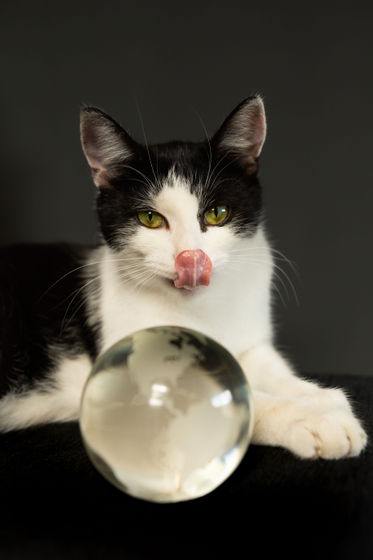Amazon succeeds in improving quantum computers with 'cat qubits' inspired by Schrodinger's cat

'Schrödinger's cat,' a topic often discussed in the field of quantum mechanics, is a famous thought experiment that likens the properties of quantum
Hardware-efficient quantum error correction via concatenated bosonic qubits | Nature
https://www.nature.com/articles/s41586-025-08642-7
How Schrödinger's cat could help improve quantum computers
https://phys.org/news/2025-02-schrdinger-cat-quantum.html
Hardware-efficient error correction: cat states make quantum chips more robust | heise online
https://www.heise.de/en/news/Hardware-efficient-error-correction-cat-states-make-quantum-chips-more-robust-10297206.html
Quantum computers exploit the properties of quantum superposition and can perform calculations in parallel, allowing them to process certain tasks much faster than conventional computers. However, the problem is that the 'qubits' used in the calculations are unstable and prone to errors.
To address this, researchers are trying to use quantum error correction techniques to spread the information across more quantum bits, preventing the calculations from collapsing. But adding more qubits comes with a drawback: the overall efficiency decreases.

In a study published in the scientific journal Nature on February 26, 2025, a research team led by AWS' Harald Puttermann took an approach that uses 'cat qubits' rather than simply increasing the number of qubits.
While a typical quantum bit is superposed on two states, such as the direction of spin, the cat quantum bit is a quantum bit that is superposed on states that are close to the opposite, like the life and death of Schrödinger's cat. According to an expert's explanation, 'Conventional quantum bits are two-state systems that can exist in two different energy states, 0 and 1. The cat quantum bit used this time is a boson quantum bit, whose energy state is the state of
The important thing is that the cat qubit has the property that it is very resistant to errors of the type 'bit flip', but weak to errors of the type 'phase flip'. Thanks to this error bias, the cat qubit can narrow down the errors that need to be dealt with to only phase flip errors, so the number of additional qubits can be reduced to make the quantum computer's error correction more efficient.

Conventional error correction techniques require dozens, or even thousands, of additional quantum bits to be used, but in this experiment using the boson cat quantum bit, the research team was able to reduce the error rate from 1.75% to 1.65% per cycle using an error correction code using just five cat quantum bits.
Although further optimization is required before quantum computers using cat qubits can be put to practical use, the team says the technology could potentially be scaled up efficiently.
Hannes Bernien of the Vienna Institute of Quantum Optics and Quantum Information, who was not directly involved in the research, told IT news site Heise online, 'Given that generating and combining qubits is not easy, this is a worthwhile approach,' and said the method of using cat qubits, which can reduce the number of qubits used for error correction, is promising.
Related Posts:
in Free Member, Hardware, Science, Posted by log1l_ks






